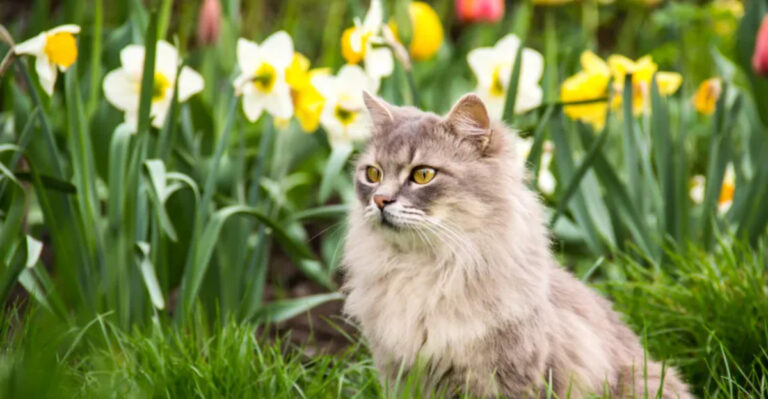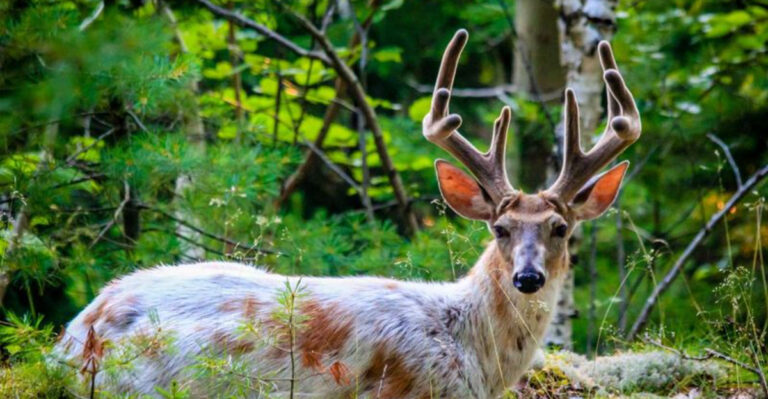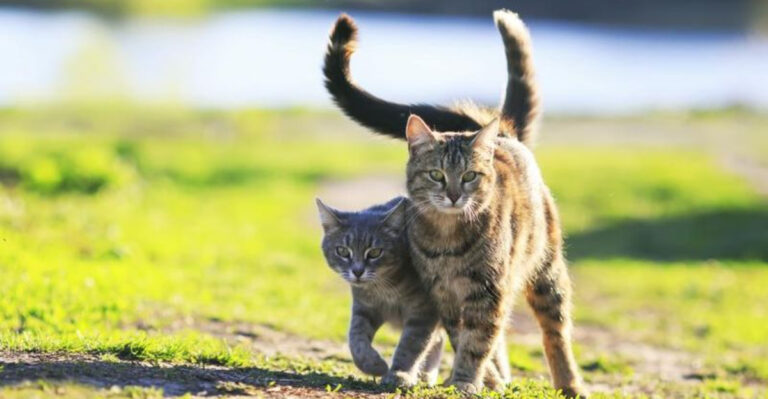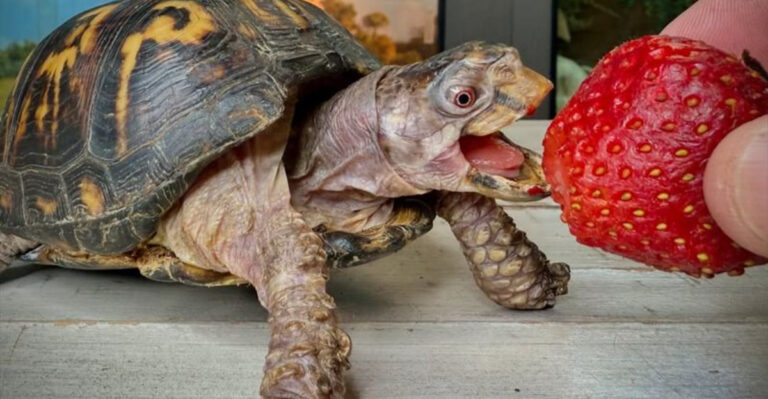Get To Know The African Buffalo: 12 Fascinating Facts About This Mighty Beast

The African buffalo stands as one of Africa’s most formidable creatures, commanding respect across the savanna with its imposing presence.
These massive bovines play a crucial role in their ecosystems while carrying a reputation as one of the continent’s most dangerous animals.
From their impressive physical attributes to their complex social behaviors, African buffaloes continue to fascinate wildlife enthusiasts and researchers alike.
1. Masters Of The Herd Mentality

African buffaloes live in massive herds that can number anywhere from 50 to an astonishing 500 individuals. These tight-knit communities provide protection against predators like lions and hyenas.
What makes their social structure remarkable is how democratically they make decisions. When it’s time to move to new grazing grounds, adult females actually vote by standing up and facing their preferred direction.
The majority literally rules, and the entire herd follows the winning choice. This collective decision-making helps ensure the group’s survival in harsh environments where finding water and food requires wisdom from many members.
2. Armed With Nature’s Helmet
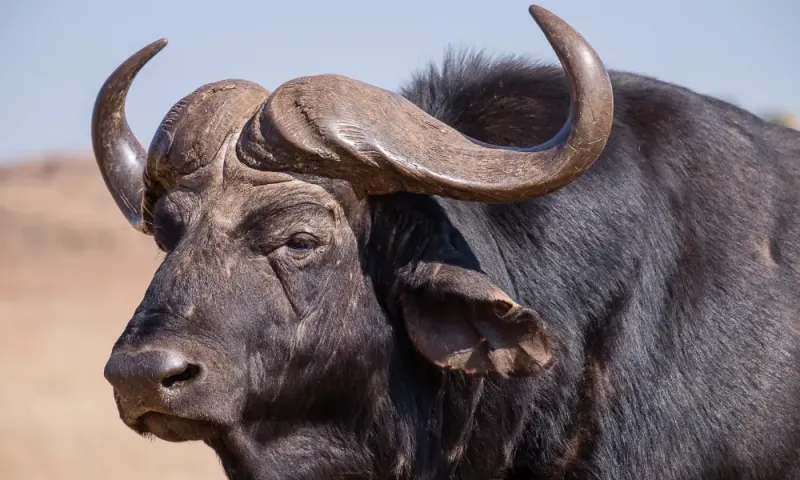
The buffalo’s most recognizable feature is its magnificent set of horns that form a continuous bony shield across its forehead, called a boss. Males develop this protective helmet as they mature, creating an almost impenetrable defense.
These curved weapons can span up to 5 feet from tip to tip on large bulls. Beyond protection, horns serve as status symbols within the herd and powerful tools during mating season competitions.
Even lions think twice before attacking an adult buffalo head-on – those horns can easily gore and fatally wound even the mightiest predators who make calculation errors during a hunt.
3. Memory Like An Elephant

Buffaloes never forget a threat. Unlike many prey animals that flee and then return to normal behavior, wounded buffalo have been known to circle back and ambush their attackers, even days after the initial encounter.
Rangers and hunters consider them among the most vindictive animals in Africa. A buffalo that’s been injured will often hide in thick vegetation, waiting patiently for its attacker to pass by again.
This remarkable memory and capacity for revenge have earned them the nickname “Black Death” among hunters. Their intelligence allows them to recognize specific threats and develop sophisticated strategies to eliminate them.
4. The Mud Bath Enthusiasts
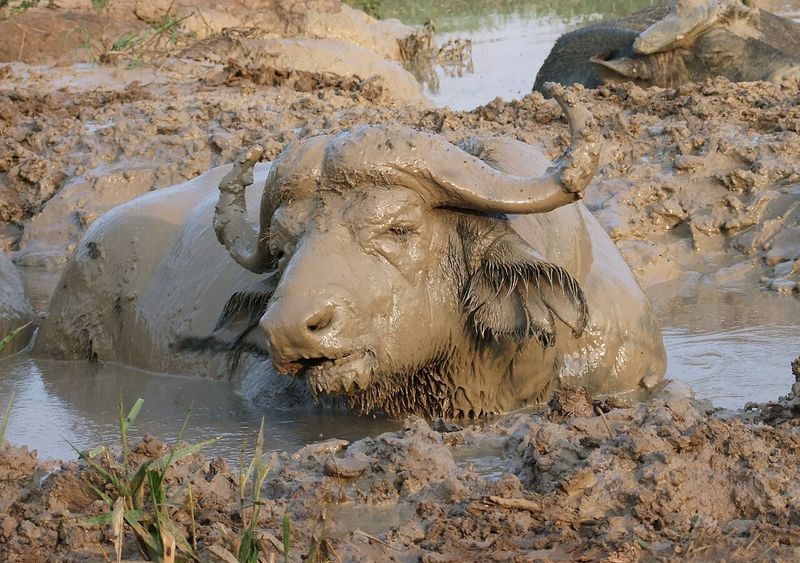
African buffaloes love a good wallow in mud – but not just for fun. These mud baths serve multiple practical purposes in their harsh environment. The thick coating helps regulate their body temperature during scorching African afternoons.
Mud also acts as a natural sunscreen, protecting their skin from the intense equatorial sun. Perhaps most importantly, it serves as an effective defense against biting insects that can transmit diseases.
After a thorough coating, buffalo will often rub against trees to scrape off parasites caught in the drying mud. This natural spa treatment is a daily ritual for many herds during the hotter months.
5. The Lion’s Most Feared Prey
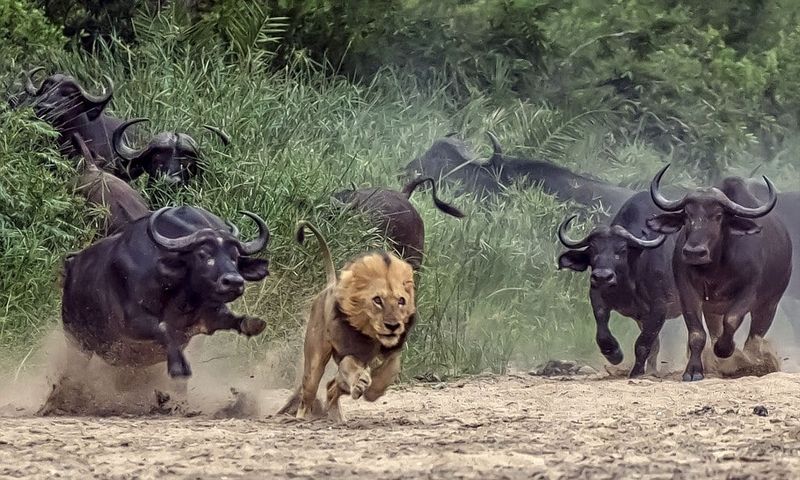
Lions may rule the African savanna, but they approach buffalo hunts with extreme caution. A single buffalo can weigh up to 1,500 pounds – more than enough to crush a lion with its sheer mass and power. What makes buffalo particularly dangerous is their tendency to fight back as a unified force.
When a herd member is attacked, others often rush to its defense, forming a protective circle or even charging directly at predators.
Experienced lion prides typically require multiple members working in perfect coordination to bring down a healthy adult buffalo. Even then, the hunt success rate remains surprisingly low compared to other prey animals.
6. Nature’s Landscape Engineers
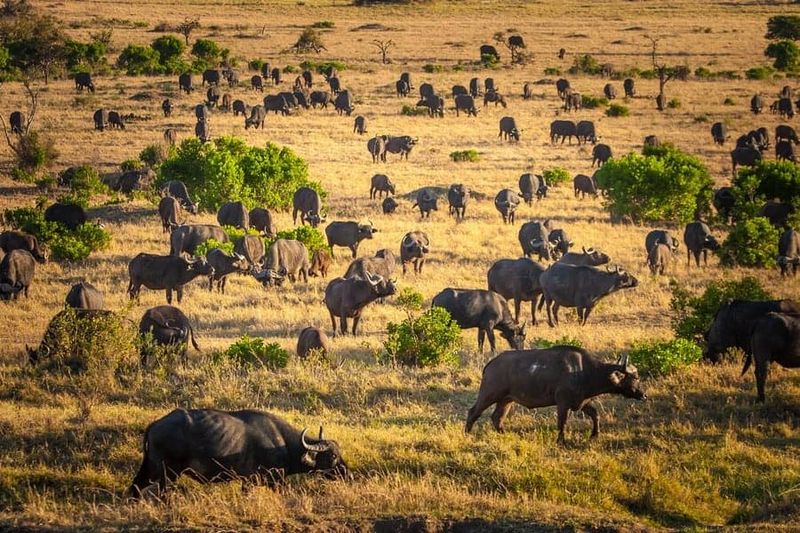
Buffalo herds reshape their environment through their massive appetites and movement patterns. A single adult can consume up to 130 pounds of grass and plants daily, effectively mowing down tall vegetation across vast areas.
Their heavy hooves compact soil and create depressions that collect rainwater, forming temporary water sources for other species. Buffalo dung serves as essential fertilizer, distributing seeds and nutrients that maintain grassland health.
By preventing any single plant species from dominating, these grazing patterns promote biodiversity. Their constant movement between water sources and feeding grounds creates natural pathways through dense vegetation that smaller animals utilize.
7. The Four Distinct Subspecies
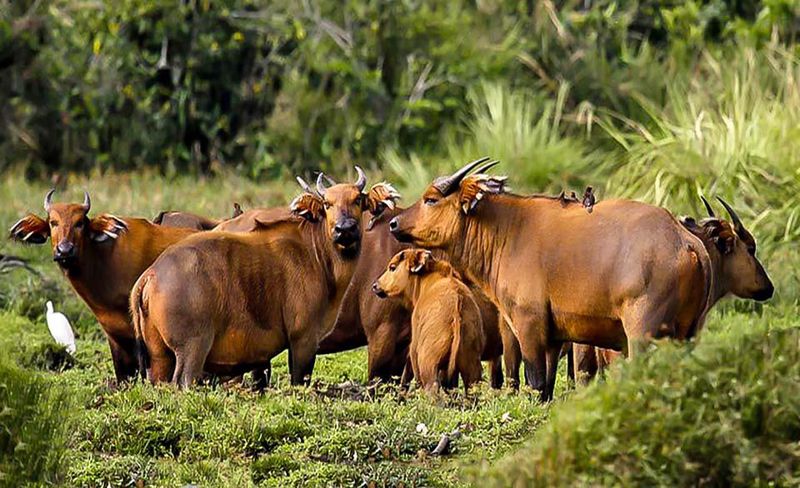
Not all African buffaloes look alike – they actually exist in four distinct subspecies adapted to different environments. The Cape buffalo is the largest and most recognizable, with massive horns and a preference for open savannas.
Forest buffaloes are smaller with reddish-brown coats and inhabit the dense rainforests of Central Africa. The West African savanna buffalo occupies the region between these extremes, while the mountain buffalo has adapted to higher elevations.
Each subspecies evolved unique characteristics that help them thrive in their specific habitat. Their adaptability across such diverse African landscapes showcases the remarkable evolutionary success of these powerful bovines.
8. Water-Dependent Giants
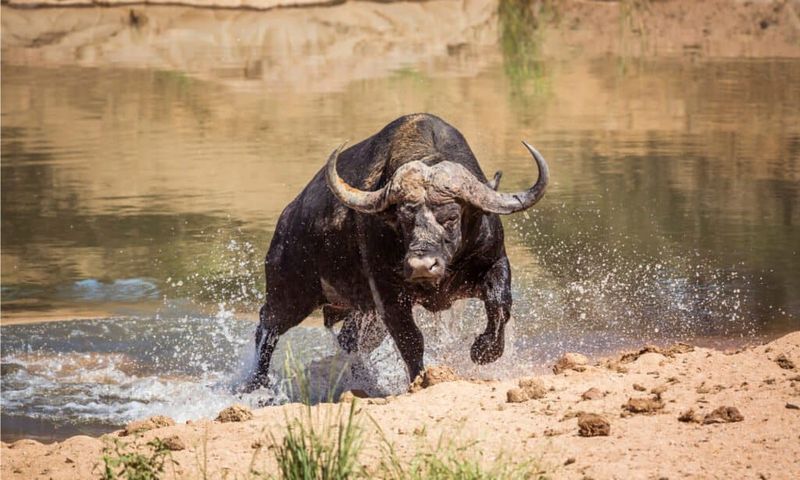
African buffaloes cannot survive without regular access to water. Unlike some African herbivores that can go days without drinking, buffalo must drink daily and typically remain within 20 miles of a reliable water source.
This dependency shapes their entire migration pattern and habitat selection. During dry seasons, competition for dwindling water holes intensifies, forcing herds to travel farther and risk encounters with predators and human settlements.
Their bodies require this constant hydration due to their size and their digestive processes. Buffalo movements have become important indicators for ecologists tracking climate change impacts on African ecosystems as water sources become increasingly unpredictable.
9. Communication Through Body Language

Buffaloes have developed sophisticated non-verbal communication systems within their herds. The position of their massive horns signals emotional states – horizontal indicates aggression, while pointing downward suggests submission.
Tail movements serve as important indicators too. A raised tail often warns of perceived danger, immediately putting the entire herd on alert. Buffaloes also communicate through deep grunts and bellows that can travel considerable distances across the savanna.
Calves recognize their mothers’ specific calls among hundreds of similar-sounding adults. This complex communication network helps maintain herd cohesion and coordination, especially during dangerous encounters with predators or during seasonal migrations.
10. Surprisingly Fast Sprinters
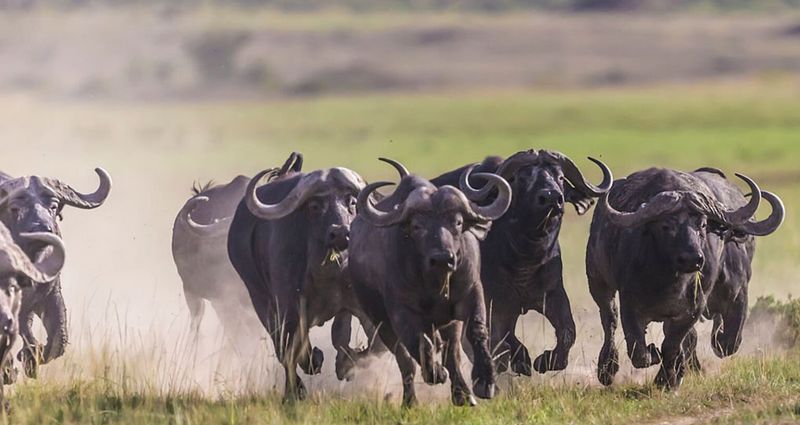
Despite their bulky appearance, buffalo can reach speeds of up to 35 miles per hour when threatened. This unexpected agility makes them especially dangerous when charging – they can accelerate from standstill to full speed in seconds.
Their powerful leg muscles store tremendous energy, allowing for both sustained running and explosive bursts when needed. A charging buffalo can maintain this impressive speed for nearly two miles before tiring.
Combined with their weight and horns, this speed makes them particularly lethal when provoked. More people are killed by buffaloes in Africa each year than by any other large animal except hippos and crocodiles, largely due to their ability to close the distance rapidly before victims can escape.
11. Nature’s Weather Forecasters

Local communities across Africa have long observed buffalo behavior to predict weather changes. Herds become noticeably more active and agitated hours before storms arrive, even when skies appear clear to human observers.
Their sensitive ears can detect the low-frequency sounds of distant thunderstorms long before humans hear anything. This early warning system helps them find shelter or move to higher ground before heavy rains cause flash flooding.
During extended droughts, buffalo herds will sometimes begin migrating days before other animals sense water scarcity.
Indigenous trackers have relied on these behavioral cues for centuries, recognizing that buffalo movements often signal important environmental changes before other indicators appear.
12. The Ox-Pecker Partnership
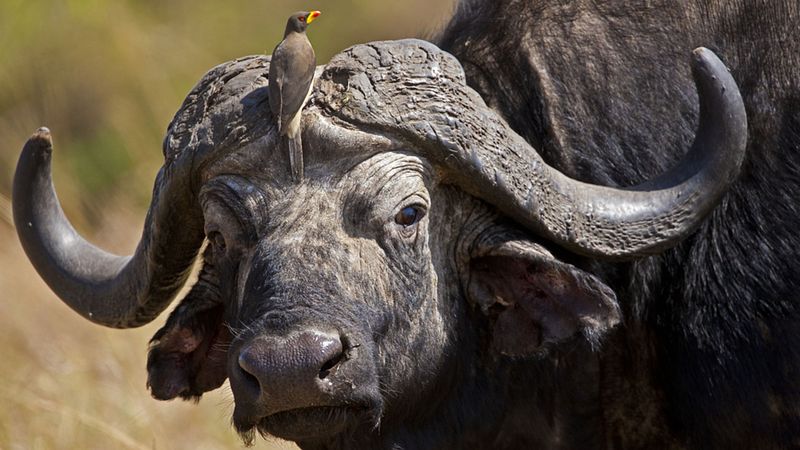
African buffaloes maintain one of nature’s most fascinating symbiotic relationships with small birds called ox-peckers. These birds perch directly on buffalo, feeding on ticks, flies, and other parasites that plague the massive mammals.
Beyond pest control, oxpeckers serve as an early warning system. Their sharp eyes spot approaching predators and they immediately alert the buffalo with loud alarm calls. This partnership benefits both species – the birds get a reliable food source while buffalo receive grooming and protection services.
Some ox-peckers even clean wounds by eating dead tissue, potentially preventing infections. However, researchers have observed that these birds occasionally expand their diet to include blood from open wounds, complicating this relationship.

